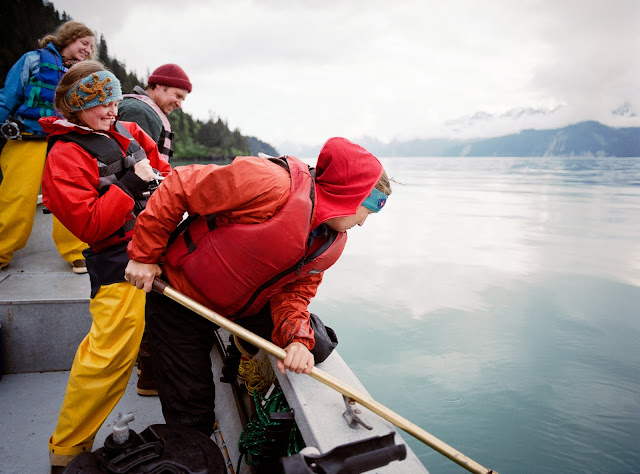This year I found myself celebrating Thanksgiving in a different way; with a group of highliners in Moab, Utah. Little did I know that this pursuit of my favorite pastime, slacklining, would unfold to be a transformational experience.
For the dwindling number of you who have not heard of slacklining: This is a fast growing sport that originated in the 1970's, a group of climbers in Yosemite started tensioning their 1" tubular webbing horizontally. Learning to walk the line, they developed their core strength and balance as a rest day activity. A basic setup requires two strong anchor points like a tree or a rock, a length of webbing, and a pulley system. The sport requires that you hone both your physical balance, as well as your mental balance to be able to walk or "send" the full length of the line.
My buddy Andrew and I set off on our journey from San Francisco to Moab full of anticipation for a weeks worth of camping, highlining, and all around play (I also brought my mountain bike, for Moab is fruitful).
The ride was long, split over two days. Here Andrew stands... eating the famously reliable PB&J.
This was the first sight upon arrival. Before me stood a large canyon, with multiple lines strapped across it. The highliners nicknamed this outcrop "The Fruitbowl" because of its many glorious slackline possibilities, from 22ft to 420ft.
I had been slacklining in grassy parks for several months and seen many great videos of highliners walking across the sky... But I realized immediately that there is no substitute for seeing it in person. Furthermore, I quickly came to the conclusion that I had vastly underestimated how hard this was going to be.
For those of you wondering: despite how it looks, this is actually incredibly safe.
Some of the longer lines are designed to be tightly tensioned. One of the longest lines we had set up that week was 420ft, and was tensioned at 3000 lbs, less than a third of its breaking strength.
Although some experts will occasionally walk the line without any safety protection, most of us opted to be harnessed into the line. Being leashed to the line meant that if one were to fall, the drop would be only 6-8 ft instead of 400ft. But believe me, falling is never fun. I took many "whips" off the line that week, and it never got any easier.
It took me days to be able to do what Christian is doing here. The shortest line was 22ft, and although I could walk that length without difficulty in a city park... I quickly discovered that when exposed above 400ft of air, my mind felt contrary to the task. This was a pretty tough, yet glorious way to cut my teeth as a highliner. Breathing steadily and focusing perfectly is the only way to do this. After days of internal struggle, and many falls later, it was on my fourth day that I found the willpower to ignore the fearful thoughts in my head, I managed to push through and walk the line.
While I was learning to walk all over again, I was continually amazed, inspired, and encouraged by the amazing community of slackliners that surrounded me. Everybody was there to do this one amazing thing, highlining was the foundation of our camaraderie. It turns out that we could all be described as funambulists, carrying on the long tradition of the balancing arts.
As an added bonus, the engineers of this overwhelming experience also had the great wisdom to set up a 250 ft rope swing. Here Andrew is being looked over by his good friend Andy before taking a really big plunge.
Unlike highlining, the rope swing requires no effort at all. Just count down from three (a popular tactic) and step off the ledge. The rope which is attached to the middle of one of the highlines, catches and softly swings the rider out into the canyon.
As you free fall, the cliff walls seem to shoot above you and the bottom becomes magnified, but soon the rope catches and the swing begins. When you finally stop swinging, the view from the bottom is amazing, a whole new perspective of the lines above. A rope on the side of the canyon is your ticket home as you ascend with the climbing equipment you jumped down with.
Another highlight of the trip was the food and the company. I brought along my EcoZoom rocket stove which cooked my rice and beans with great speed using only a few twigs. I had my new German friend Lukas sit down and have a bite as I captured this shot at sunset.
At night, the camp convened around a roaring bonfire. Delicious libations, tremendous music, and enlightening conversation were the norm.
And in closing, not to be forgotten, was the natural beauty and the perfect weather that was our backdrop for the week of Thanksgiving. We were all in awe of this sublime experience.



































































